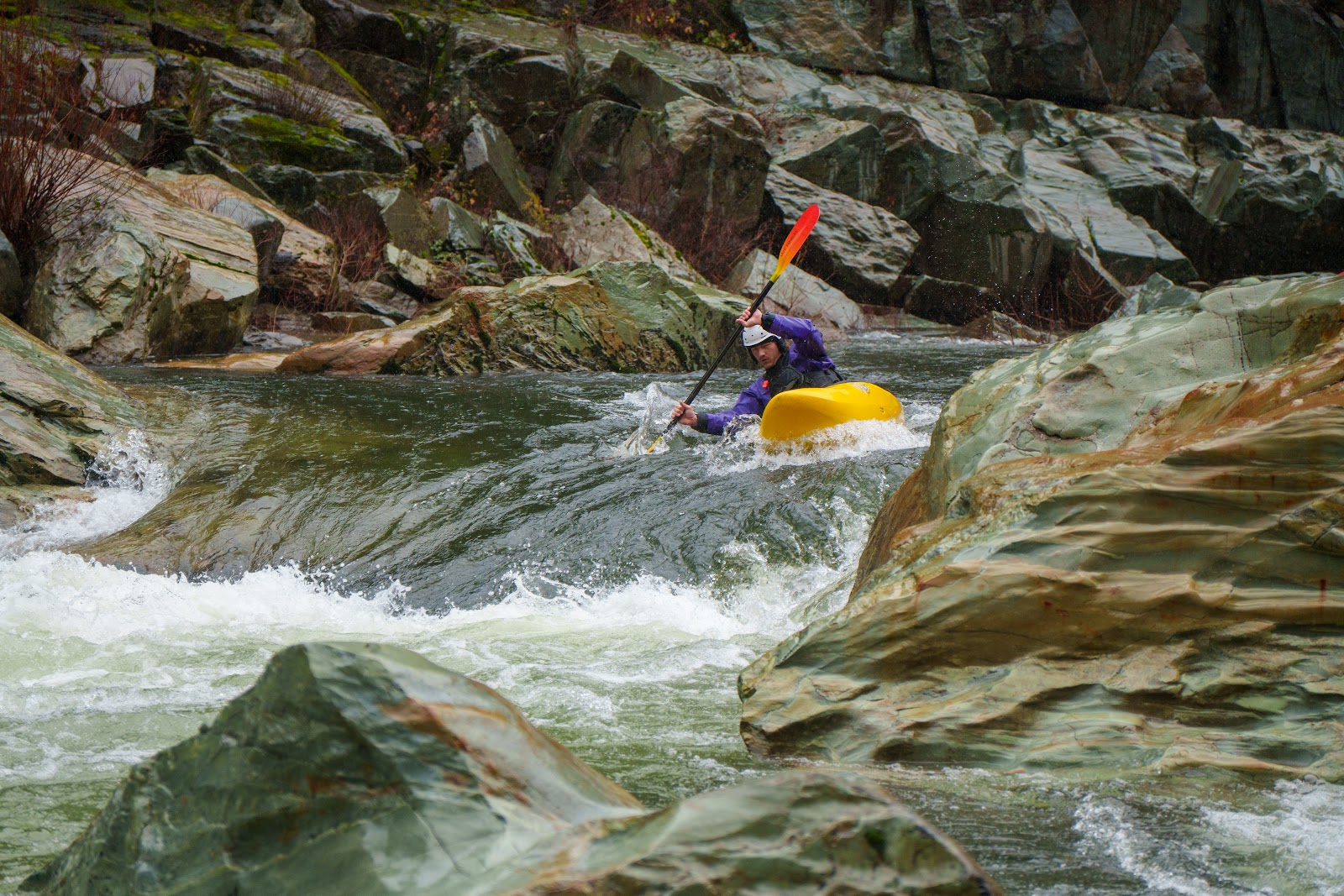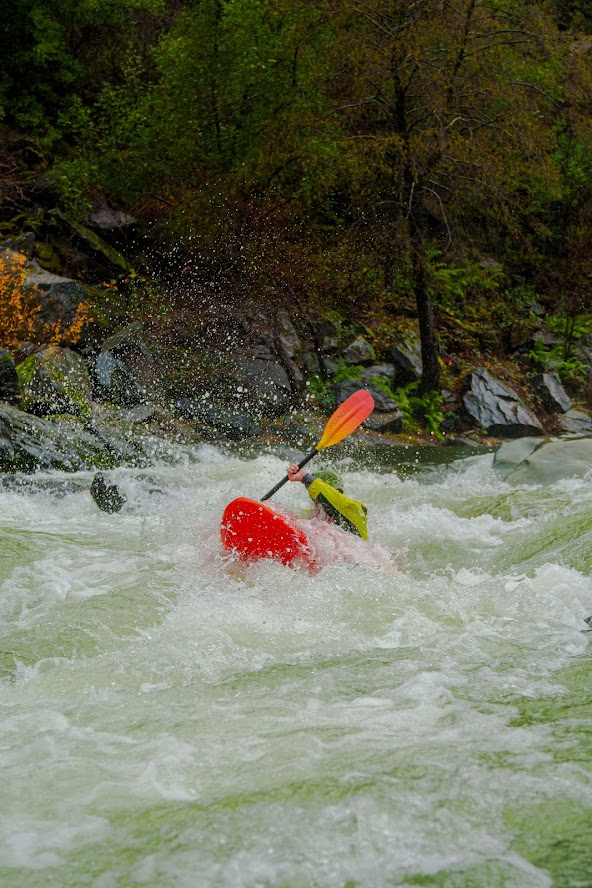A rainy Chamberlain Falls lap; an unexpected score; photographs
I’m lucky. Like really, really lucky.
Chamberlain falls, a sweet, scenic, short class IV run is only 30 minutes from my doorstep. As the winter spins up, our collective eyes are drawn to the Lake Clementine inflow gauge, patiently and eagerly awaiting the flow bump we crave.
It’s important to note that the actual Chamberlain Falls run (hereby also known as Chamb, Chambies, Chamberlain) is about 9 miles from the Inflow Lake Clementine (aka Inflow) gauge, meaning there is a slight delay. I don’t actually know the exact timing. Some claim it’s 3-4 hours downstream of the takeout, others claim it’s a whole 8 to 10 hours. The winter also complicates things; since the majority of flows originate from rainfall (as opposed to snowmelt) accretion from streams within the 9 miles to the gauge also add liquid. Essentially, it’s really tough to know exactly what flow in CFS you have on the run.
Which is why I generally rely on the Mineral Bar (put in) stick gauge. Unfortunately this gauge is broken off below the 1.7 ft mark. As a rule of thumb, if the water level is above the broken off portion, you’re in for a fun, splashy time. I have personally (at the time of writing) run Chamberlain from flows as low as 0.8 ft to as high as 2.7 ft. I think this equates to 500 cfs and 2400 cfs, respectively.As a note, in the spring, more and more of the Inflow Lake Clementine gauge is representative of the actual flow in the run. In the winter, an 80% approximation is generally applied to the Inflow gauge.
Many of us paddlers rely on the California Nevada River Forecast Center (CNFRC) forecasts to plan our paddling. During storm cycles, the CNFRC forecasts generally update every day at 9am and 3pm. Thanks to speedy government work, the forecasts often are published prior to these times.
The last two storm cycles have been odd and hard to predict. We’ve had varying success with the forecast accuracy, with the previous storm delivering barely a bump in flows, missing the forecast peak flow by a significant amount. So coming into this storm, most of us were quite skeptical to say the least.
As we met at the takeout, none of us really knew what to expect flows wise. We all had our fair share of scraping ass down the run at 0.8 (500 cfs?) and really didn't need more of that. So when we put in and noted that the Mineral Bar stick gauge was at 1.5 ft, we were elated. 1.5 ft is a nice friendly flow while still being fun. Sure, more water is fun, but all of us were grateful it wasn’t sub 1.3.
Putting on with a light drizzle, all of us were in a good mood. The beginning of the run was filled with laughs and smiles, everyone pleasantly surprised at the non-shitty flows. As we floated through the slow sections, I let the group know I wanted to get photos at Achilles Heel, a three tiered class III/IV rapid. At 1.5 ft, Achilles would be a sweet, fun time.
I dropped into Achilles, aiming to eddy out on the left side of the rapid after the boof off the left shoulder. As I took my camera out of my bag, it started to rain harder. My lens was immediately covered with raindrops and I struggled to wipe them off with the microfiber cloth I use to dry my hands. I often self-impose a rush while setting up for photos, not wanting to inconvenience my paddling partners. However, the last time I photo boated, I rushed the setup of a shot and my camera settings were all wrong. I wasn’t shooting in stills mode, my ISO was wacked out, and my shutter was all wrong. So, learning from my past mistakes, I took 30 seconds to double check my settings, get my footing set right, test frame the shot, and check focus. When I was ready, I blew the whistle to signal folks to drop in.
 |
| Brian the Technician dropping in. Love the purple and yellow contrasting colors here. |
 |
| Cam on the sticks. Love the energy. |
 |
| Spencer bracing for impact. |
I grabbed a rope and set as much safety as realistically possible. Then I got set with my camera ready to capture the magic.
 |
| Brian dropping in first, styling it as per usual. |
 |
| This is one of my first attempts at using the wide focal length of my Tamron 17-70; I really enjoy how it makes a close-up subject look. |
 |
 |
| A focused Cam. |
 |
| I'm just now noticing the purple hue to the rocks in the background. Odd. |
 |
| Mike dropping into the chaos. |
 |
| Rick nailing the boof and the edge. |
 |
| Rick skips. |
To be honest, I haven’t enjoyed something this much in a long while. I’ve never really seen myself as a creative person and I’ve always really thought that creativity was genetic, but I’m now realizing that it’s something that can be learned. In the end, I think it’s really just a skill like any other; you just need to practice more and more.
Capturing photo and video has added such a neat dimension to my activities. I don’t just enjoy them when I go out and run rivers or rip single track, but I also get to savor and relive the memories after the fact. For that, I’m stoked. I can't wait to learn more.




























Comments
Post a Comment